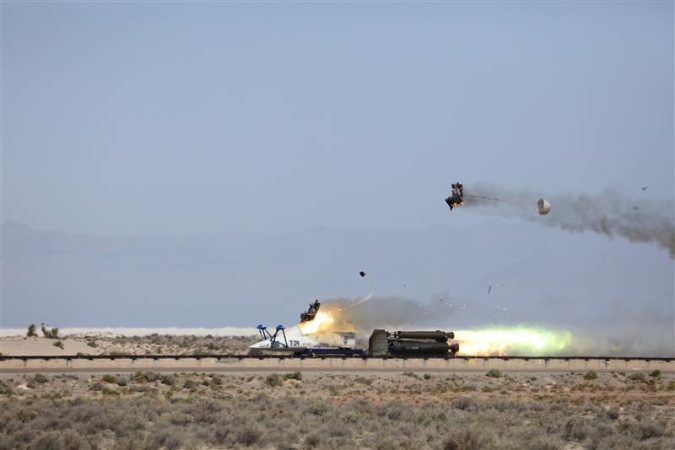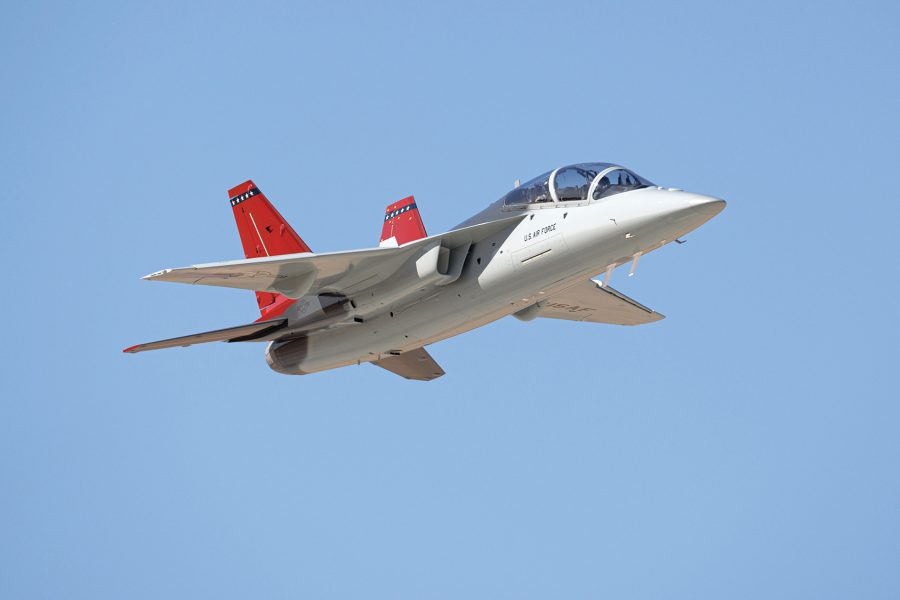The Air Force announced a successful ejection seat test for its T-7A trainer, and an official told lawmakers the service expects the jet to achieve initial operating capability by November 2027—two signs of progress for the program after many setbacks.
“We worked with our training community to make sure we are meeting AETC IOC requirement of November 2027,” Darlene Costello, the service’s principal deputy assistant secretary for acquisition, technology, and logistics told the House Armed Services Committee hearing on May. 7.
Costello’s remarks offer more clarity after the Air Force announced in January it was changing its acquisition plan for the T-7 in a bid to reach IOC sometime in 2027.
The announcement also follows a recent test at Holloman Air Force Base, N.M., to evaluate the newly installed canopy and ejection system of the T-7 aircraft. Boeing recently redesigned the canopy to safely break apart, preventing injuries from shattered glass, and added a new seat sequencer that deploys the parachute for a longer duration, reducing the risk of neck and spine injuries during descent. Last month, the 846th Test Squadron tested the T-7’s revamped escape mechanism with both light and heavy mannequins during a 450-knot (518 mph) ejection. The egress system is scheduled for another test in August.

The new trainer aircraft, developed to replace the 60-year-old T-38 Talon, boasts a single engine, twin fins, and stadium seating, providing unobstructed views for both the instructor and student pilots—something the T-38 lacks—while aiming to significantly reduce the time required to train fighter and bomber pilots.
But the production has faced safety-related setbacks during testing, pushed key milestones back time and time again.
In 2021, the Air Force revealed that the T-7 suffered from “aircraft wing rock” at high angles of attack, making it unstable in the roll axis. In late 2022, the Air Force and Boeing announced problems with the flight control software and escape system, stemming in part from the need for the seat to accommodate a wider range of body sizes. Faulty instruments also led to inaccurate testing data. And in early 2024, Boeing identified quality problems with some T-7 parts.
“We’ve now resolved the known ground-based training system requirements,” Costello added. “We’ve resolved the stability concerns; we did that in March of this year. Now, we’re working towards delivery to Randolph by October of this year. A recent qualification sled test on the egress system demonstrated optimal performance, so it’s showing good progress.”
In March, Boeing revealed that initial T-7A trainer production units are expected to be delivered in early 2026. Joint Base San Antonio-Randolph will receive the ground-based simulator this year ahead of its first T-7 deliveries scheduled for next year.
“The T-7A Red Hawk beddown is currently projected for [fiscal 2026], and the 99th Flying Training Squadron is set to be the first unit in the Air Force to receive the aircraft,” a spokesperson for the 12th Flying Training Wing at JBSA previously told Air & Space Forces Magazine.
Boeing teamed up with Swedish aerospace firm Saab in 2018 to build the T-7, and since Saab opened its Indiana facility in 2021, the companies have been working on the aircraft’s aft fuselage there. Costello added that Boeing’s subcontractor will resume work, with assembly of additional key aircraft components set to begin in August.
